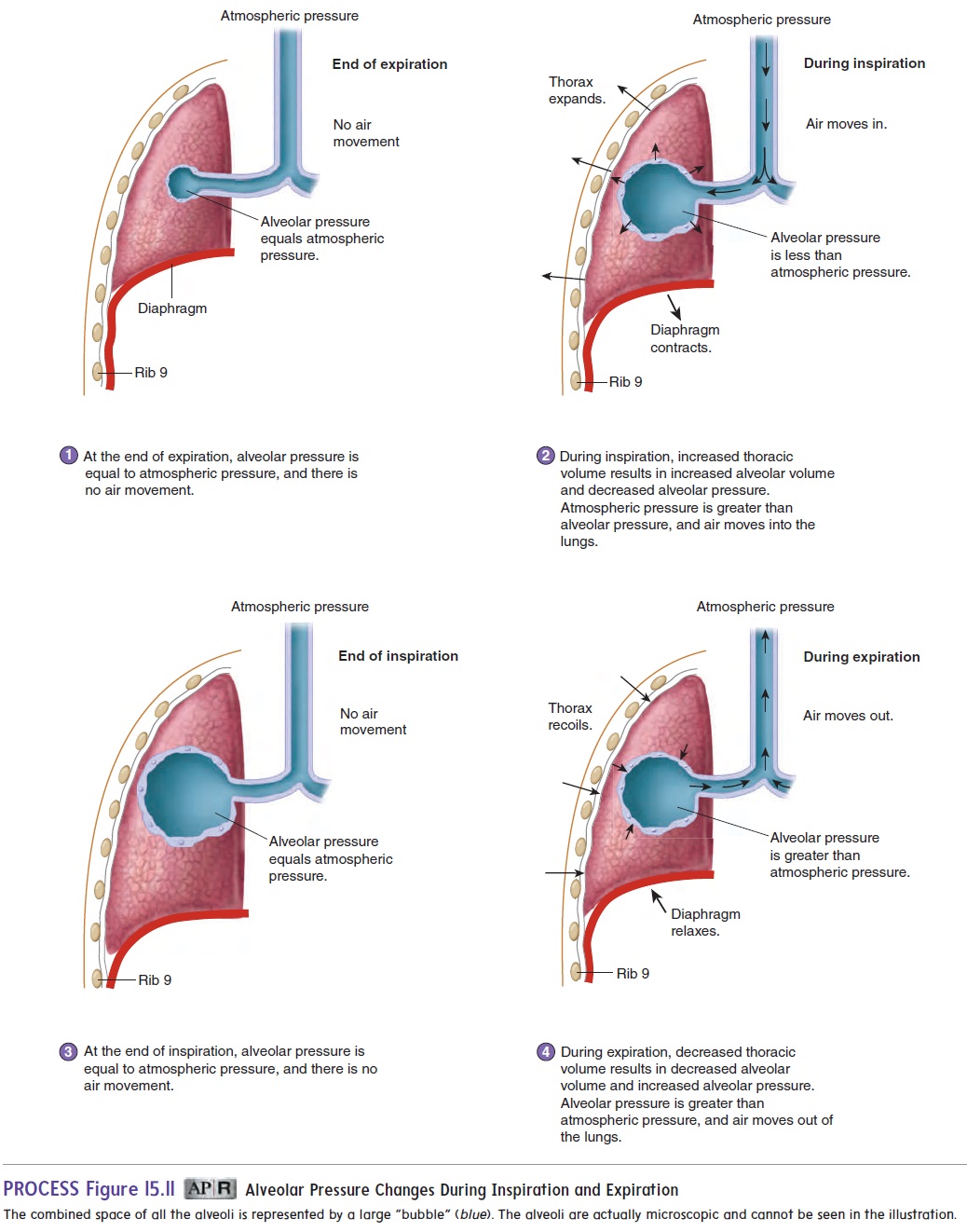Chapter: Essentials of Anatomy and Physiology: Respiratory System
Lung Recoil
Lung Recoil
During quiet expiration, thoracic volume and lung volume decrease because of lung recoil, the tendency for an expanded lung to decrease in size. The thoracic wall also recoils due to the elastic properties of its tissues. Lung recoil is able to occur because the connective tissue of the lungs contains elastic fibers and because the film of fluid lining the alveoli has surface tension. Surface tension exists because the oppositely charged ends of water molecules are attracted to each other . As the water molecules pull together, they also pull on the alveolar walls, causing the alveoli to recoil and become smaller.
Two factors keep the lungs from collapsing: (1) surfactant and(2) pressure in the pleural cavity.
Surfactant
Surfactant (ser-fak′tănt;surfaceactingagent) is a mixture oflipoprotein molecules produced by secretory cells of the alveolar epithelium. The surfactant molecules form a single layer on the surface of the thin fluid layer lining the alveoli, reducing surface ten-sion. Without surfactant, the surface tension causing the alveoli to recoil can be ten times greater than when surfactant is present. Thus, surfactant greatly reduces the tendency of the lungs to collapse.
Pleural Pressure
When pleural pressure, the pressure in the pleural cavity, is less than alveolar pressure, the alveoli tend to expand. This principle can be understood by considering a balloon. The balloon expands when the pressure outside it is less than the pressure inside. This pressure difference is normally achieved by increasing the pressure inside the balloon by blowing into it. This pressure difference, however, can also be achieved by decreasing the pressure outside the balloon. For example, if the balloon is placed in a chamber from which air is removed, the pressure around the balloon becomes lower than atmo- spheric pressure, and the balloon expands. The lower the pressure outside the balloon, the greater the tendency for the higher pres- sure inside the balloon to cause it to expand. In a similar fashion, decreasing pleural pressure can result in expansion of the alveoli.
Normally, the alveoli are in the expanded state because pleural pressure is lower than alveolar pressure. Pleural pressure is lower than alveolar pressure because of a suction effect caused by fluid removal by the lymphatic system and by lung recoil. As the lungs recoil, the visceral and parietal pleurae tend to be pulled apart. Normally, the lungs do not pull away from the thoracic wall because pleural fluid holds the visceral and parietal pleurae together. Nonetheless, this pull decreases pressure in the pleural cavity. You can appreciate this effect by putting water on the palms of your hands and then placing them together. As you gently pull your hands apart, you will feel a sensation of negative pressure.

PROCESS Figure 15.11 Alveolar Pressure Changes During Inspiration and Expiration
When pleural pressure is lower than alveolar pressure, the alveoli tend to expand. This expansion is opposed by the tendency of the lungs to recoil. Therefore, the alveoli expand when the pleural pressure is low enough that lung recoil is overcome. If the pleural pressure is not low enough to overcome lung recoil, the alveoli collapse, as is the case with a pneumothorax (see the Clinical Impact: “Pneumothorax”).
Related Topics